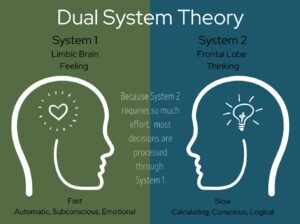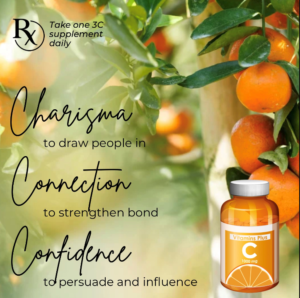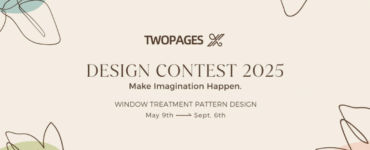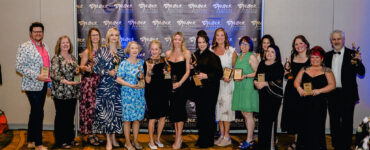By Kathy Cragg Pace
First, understand that people are not as rational as you think they are.
Has this ever happened to you? You’ve narrowed down the options and have a great solution. You’ve explained all the details and described all the features and benefits. You know the result will look great. You know it will solve the functional problems your client has been suffering from. You’ve provided all the reasons this product is the right solution if they would only buy it. All they need to do is say yes. But they don’t.
Turns out, it’s not all those rational reasons you provided that make people buy. We’ve been programmed for years to believe that, with enough data and information, people make the right choice. If you present facts, you’ll talk somebody out of their fear. Why then have we come to the realization that sticking to the facts isn’t working like we thought it would? Rather than buying, we often hear “Let me think about it” or “OK, I’ll talk this over with my spouse and get back to you.” It’s because sticking to the facts is old-school thinking. Eventually it dawns on modern sales professionals that facts aren’t all that inspiring—and those who recite facts seldom influence clients to open their wallet.
In the business world, facts reign supreme. The subject of emotions is taboo. Feelings are seen as unreliable, messy, unpredictable. For decades, we’ve been led to believe that fact-based thinking is the only means to making a good decision, so we’ve stopped paying any attention to the emotional side of the equation. Traditional sales taught us to educate the client. We do this with facts about how our product will solve their problem. Doing it this way completely disregards what science now validates as the most important side of the trust equation. We need both rational and emotional thinking to make good decisions.
Thinking + Feeling = Trust
This is where the Dual System Theory comes in. There is a growing body of research that has determined that, in decision-making, System 1, the fast, automatic, subconscious and emotional side of the brain (also known as the Limbic System) wins out over the slow, logical, conscious and calculating System 2 (the Frontal Lobe). System 1 wins primarily because System 2 takes so much more effort to process all that information. When feeling is left out of the equation, we tend to hesitate because we are fearful of making a mistake. We don’t make any decision. But when both systems are engaged, faster and better decision-making is the result. We need thinking and feeling in our sales relationships!

In a not-too-complex way, educate your client. As simply as possible, explain the rational reasons your product will solve their problem. Then, go one step further. Successful pros intentionally balance the equation. They include vivid descriptions of the way the room will feel when the problem is solved. One way to do this is to describe how your client’s life will be transformed. Bonus points if that description is in the form of a personalized story about a past client with the same problem and the story ends—because they bought your solution—with that client enjoying their comfortable, inviting home. When you do this, you take your current client out of their thinking mind and into dreamland. You paint a vivid picture and introduce emotion into the equation in an effective, appropriate way.
Take a moment for an appointment self-check. What do you spend the most time talking about during your appointments? Think about how you build value. Do you use stories to paint interesting, vivid word pictures? What about your call to action? If it’s all rational, about the product and what it does, you’re missing the very ingredient that will influence your client to buy. Stop relying so heavily on facts as your primary means of motivating clients to buy.
The second step is to infuse every appointment with a triple dose of vitamin C.
Make sure your interactions include the three Cs: connection, confidence and charisma. They are what could be called transformation supplements. They boost sales and help you build a healthy business. You’ll notice they are all feelings. Our clients feel it when a charismatic, passionate professional walks into their home. They feel if we care enough and take time to make a genuine connection with them. They feel our confidence—or lack thereof. These feelings stimulate the limbic/emotional part of the brain. The resulting gut feeling registers almost instantaneously; no thinking involved.
Dear client, thank you for scheduling an appointment with me. Please take this triple-action vitamin daily before we meet.
That’s probably not going to happen, but there is good news. There are specific things you can do to purposefully foster positive feelings in a non-gimmicky way, without any of the feared “messiness” side effects.
Charisma, Connection and Confidence
Charisma is an individual’s ability to attract and influence other people. While it’s sometimes thought of as a mysterious quality that one either has or doesn’t have, some experts argue that the skills of charismatic people can be learned and cultivated. Vanessa Van Edwards, author of “Captivate: The Science of Succeeding With People,” provides several examples of charisma, not as a personality trait but as a skill that can be learned and honed. One of these skills is to be an active listener—make that person feel like they are the only person in the room or at least the most important. Simple gestures such as nodding your head, looking at them, trading smiles, sures and uh-huhs all demonstrate you are listening.
Connection, isn’t it what we all want in important human interactions? Do you know anyone who finds transaction after transaction very sat

isfying? Why do we settle for this in business, when, in the rest of our lives, we have deeper relationships with those who matter to us? Sales success depends on forming a friendly relationship with the client in front of you. Connecting with them is the most important thing on your agenda. Connection leads to trust and trust leads to sales.
There’s science in connection too. The more you feel it, the more oxytocin you have pumping through your body. When you discover points of commonality with a client, oxytocin, which has been called the trust molecule, is produced in both of you. Benefits include faster bonding and stronger relationships. So, how do we inject more of this feel-good hormone into our appointments?
In your greeting, don’t pass up the opportunity for a handshake. That initial touch causes oxytocin to pump. A genuine smile, the real kind that reaches the eyes, and eye contact too. Use your other hand, placed on top off the handshake, as a gesture of warmth. Laughter is another happiness chemical. Laughing together bonds us, so lighten up a little. Remember, your clients are probably nervous about having a designer in their home.
Genuine connection takes time and effort. Our mind tells us it’s not worth the extra effort, but not our heart. The heart and the limbic brain both instinctively know better. Slow your appointment down and take extra time to connect. It works.
Confidence is the outward sign of inner certainty. Nowhere is confidence more apparent than in the way you present your solution and call your client to action. Imagine your problem is that you need something fantastic to wear to an important event this weekend. You want to look and feel like a million bucks, but you realize this is probably not going to come with a low price tag. You go to the store, gather a few items and finally try on your favorite. You step out in front of the mirror and raise your eyebrows in question to the personal shopper you’re working with. If they communicate in any way—with their voice, their mannerisms, their lack of eye contact—that they aren’t sure this is the outfit you should buy, you won’t plunk down the cash, no matter how big the discount may be. You’ll hesitate. You’ll think about it. You won’t risk it. It’s no different for a client buying your design products and service.
When you present your recommendations, you must exude confidence. “This is a great product. I’ve seen it in action, solving the very problem you have. It’s perfect for this room and will look beautiful. I want you to have it so you can finally be rid of this problem and be comfortable in this room. You need this! What do you think? Are you ready to get started today?” That kind of confidence persuades. It makes clients feel great about their decision to purchase.
Knock their socks off!
Incorporating both sides of the brain—thinking and feeling—and infusing your sales process with charisma, connection and confidence is how you “give ’em the old one-two.” Your client will see stars—in a good way. I call this “selling the transformation.” The transformation is the missing ingredient in most sales presentations. This emotional ingredient is the delicious difference, the very thing that drives the decision to purchase in the first place.
Selling a window treatment is wonderful, but there is something so satisfying in changing how your client feels about their home; lifting the experience they have every day in the rooms you’ve designed. This is what I mean when I say, “Sell the transformation.” When you do, you’ll enjoy more sales and more success in your business.
 Kathy Cragg Pace teaches modern sales for people who hate “salesy” people. Her specialty is elevated design sales for individuals and teams, empowering them to provide an irresistible selling experience. Throughout her decades-long career, she has led her own award-winning design franchise, real esate and custom home-building companies, a network of large and small independent window covering business owners and a nationwide retail team of in-home design professionals. She is currently the director of sales for 3 Blind Mice USA in California. > KathyPace.com
Kathy Cragg Pace teaches modern sales for people who hate “salesy” people. Her specialty is elevated design sales for individuals and teams, empowering them to provide an irresistible selling experience. Throughout her decades-long career, she has led her own award-winning design franchise, real esate and custom home-building companies, a network of large and small independent window covering business owners and a nationwide retail team of in-home design professionals. She is currently the director of sales for 3 Blind Mice USA in California. > KathyPace.com





